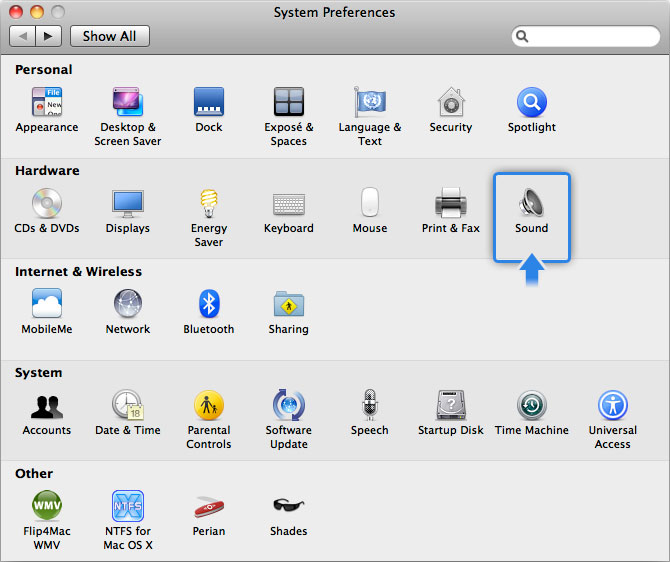

This problem is typically caused by a strange configuration change that MacOS applies to sound output if you have certain software loaded onto your Mac. In this case, the sound will probably work in other browsers like Chrome but not in Safari. If your tests have revealed that sound problems are primarily located in Safari, this may be another settings problem. Safari sound no longer works Safari website/Apple Inc. You may need to spend some time in System Preferences reconfiguring to reset any of the customized settings you had before. Keep in mind that a PRAM reset may also change some of your other settings in addition to rebooting your sound. This lets you know that your PRAM has been fully reset. Keep holding those four keys down until you hear the second startup sound play (on older Macs) or until you see the Apple logo appear and disappear for the second time (on newer Macs). When your computer is about ready to pull up the black loading screen, press the Option + Command + P + R keys simultaneously. If the problem is shared across all audio sources, it’s time to reset your parameter random-access memory (PRAM), which MacOS uses to retrieve basic settings for your Mac and connected devices. Try restarting that particular program to test it. First, make sure the problem can’t be narrowed down to any particular app or service. If MacOS is randomly cutting out the audio and then restoring it without rhyme or reason, there could be something wrong with how your computer is using memory. This can be one of the most frustrating issues to experience. Pick out your speaker options manually to circumvent this issue. As you may have guessed by now, MacOS - especially when it is loaded onto a computer that’s connected to HDMI speaker systems - can get confused about which speaker to automatically pick. In the Output list, you should see options for all these devices, as long as they are connected. “What about my headphones, external speakers, or Apple TV?” you may be asking. This should restore audio to your native Mac speakers. Try setting the sound to Internal Speakers. While you are at it, take a look at the volume bar below and make sure that your output volume is turned up and Mute is unchecked. In this tab, you should see options for choosing a sound device. Inside the Sound settings, you will see a tab called Output. Head over to your System Preferences in the Apple Menu, and look for the Sound icon. Fortunately, this problem is easy to fix. When MacOS first boots up, it sometimes does strange things when assigning speaker outputs, which can lead to radio silence. By now, you have tried to adjust volume controls, unplugged and replugged speakers, and tried to play media on a different device, but nothing seems to work. It doesn’t matter what video or app you pull up you get nothing. In this case, you get no sound at all from the speakers that you were using before the upgrade. This is for those of you who gladly upgraded but then found that your audio had cut out completely.
SOUNDFLOWER FOR MAC NOT WORKING HOW TO
Common MacBook problems and how to fix them.Common MacOS problems and how to fix them.5 reasons your MacBook keeps restarting and how to fix it.When your Mac makes sound you should see it register in the track’s meters. In the Browse tab of the Info pane choose Stereo 1/2 Soundflower (2ch) from the Input source pop-up menu. If the Info pane for the track doesn’t appear, choose Track -> Show Track Info. Open GarageBand’s preferences, select the Audio/MIDI tab and from the Audio Output and Audio Input pop-up menus choose Soundflower (2ch). Use the default tempo and time- and key-signature settings that appear in the New Project Template window and click the Create button. This creates a GarageBand project that contains a single digital audio track. You set up GarageBand by launching the application and in the New Project window that appears choosing Acoustic Instrument. When you’re ready to begin your capture, just click Record.

From the menu that appears choose Soundflower (2ch). In the Audio Recording window that appears click on the downward-pointing triangle to the right of the Record button. To configure QuickTime Player choose File -> New Audio Recording. You have a couple of applications on your Mac that can capture Soundflower’s audio-QuickTime Player and GarageBand. Step 3: Configure your capture application If your Mac makes any sound-not just the sound you’re trying to capture but also e-mail and Twitter alerts, for example-it will route that too. Do this and any sound that would normally come out of your Mac’s speakers is now routed through Soundflower. Select the Output tab and choose Soundflower (2ch).

After you’ve installed Soundflower launch the Sound system preference and you’ll see evidence of Soundflower in the Output and Input tabs.


 0 kommentar(er)
0 kommentar(er)
